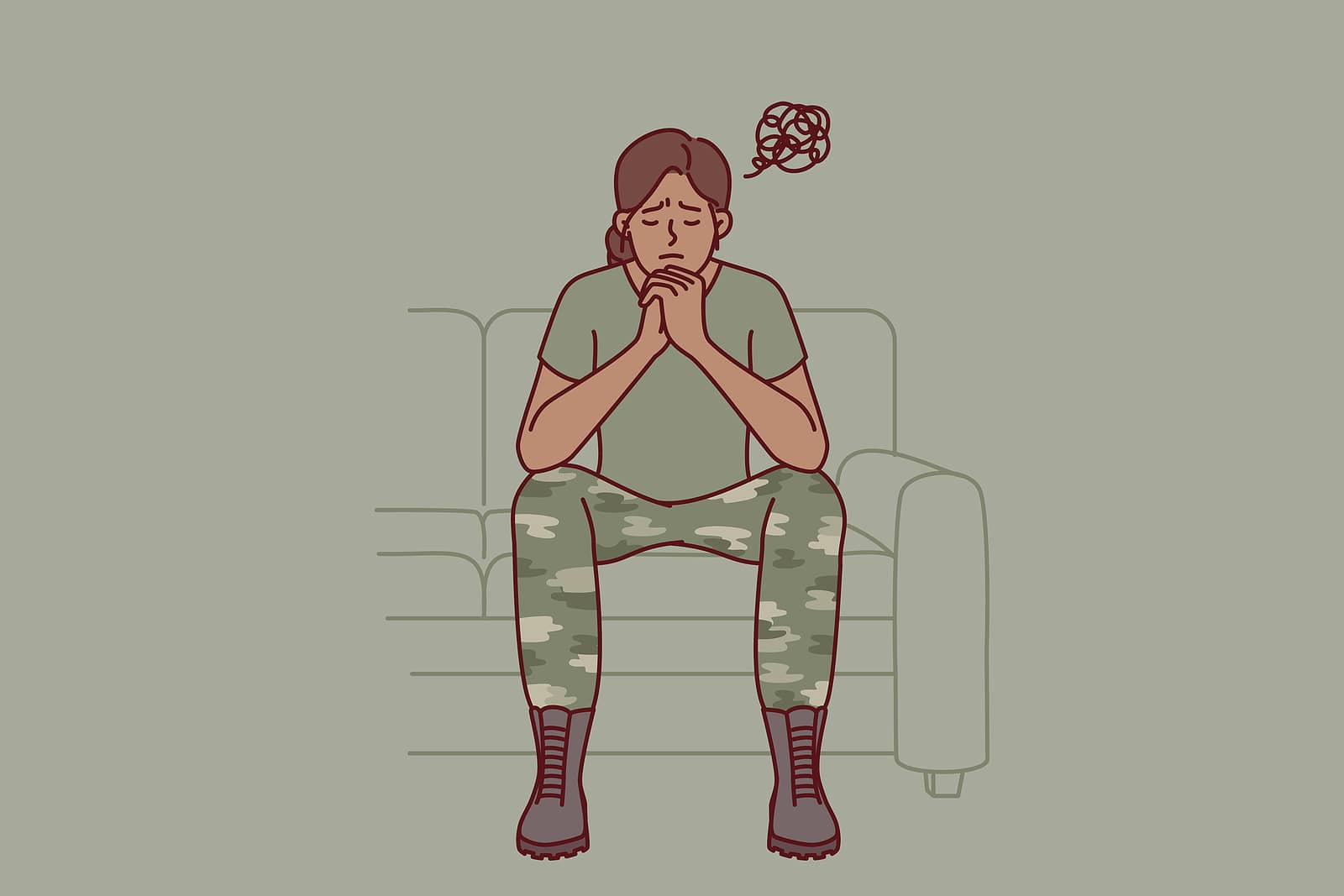What to Look for in a PTSD Therapist
Are you searching for a therapist and want to know what to look for in a PTSD therapist? Post-Traumatic Stress Disorder (PTSD) is a severe mental health condition that affects millions of people worldwide. It can arise after experiencing or witnessing a traumatic event, causing individuals to struggle with intrusive thoughts, emotional distress, and avoidance behaviors. Seeking professional help from a qualified PTSD therapist is essential for effective treatment and healing.
Understanding PTSD and Its Impact
Before delving into the qualities of a competent PTSD therapist, it is crucial to understand the impact of this condition. According to the National Center for PTSD, about 6% of the US population will experience PTSD at some point in their lives. Trauma, whether resulting from combat, sexual assault, natural disasters, or other traumatic events, can significantly disrupt an individual’s life, relationships, and overall well-being.
Approximately 5% of adults in the United States experience Post-Traumatic Stress Disorder (PTSD) each year. In 2020, the number of Americans affected by PTSD reached an estimated 13 million.
Gender plays a significant role in PTSD prevalence, with women being more susceptible to developing the condition compared to men. About 8% of women and 4% of men will experience PTSD at some point in their lives. This disparity is attributed, in part, to the types of traumatic events more commonly experienced by women, such as sexual assault, which can leave lasting psychological impacts.
Furthermore, veterans face a higher risk of developing PTSD compared to civilians. Among veterans, those who have been deployed to war zones are at even greater risk of experiencing PTSD. The exposure to combat-related trauma intensifies the likelihood of developing this mental health condition.
The Power of Trauma-Focused Treatment
Trauma-Focused Treatment has shown promising results in helping individuals with PTSD. This evidence-based therapy focuses on addressing the specific issues related to trauma, using various therapeutic techniques to help clients process their traumatic experiences and develop coping skills. According to many studies conducted between 1995 to 2013, Trauma-Focused Cognitive Behavioral Therapy (TF-CBT) has been found to be highly effective in reducing PTSD symptoms in children and adolescents.
What is Trauma-Focused Cognitive Behavioral Therapy?
Trauma-Focused Cognitive Behavioral Therapy (TF-CBT) is an evidence-based therapeutic approach designed to help individuals, particularly children and adolescents, who have experienced trauma and are struggling with the psychological effects of traumatic experiences. TF-CBT combines elements of Cognitive Behavioral Therapy (CBT) with trauma-focused interventions to address the unique needs of trauma survivors.
The main goals of Trauma-Focused Cognitive Behavioral Therapy are to:
- Address Trauma-Related Symptoms: TF-CBT aims to reduce and manage the distressing symptoms associated with trauma, such as intrusive thoughts, nightmares, flashbacks, and emotional numbing.
- Promote Emotional Regulation: The therapy helps individuals learn effective strategies to cope with overwhelming emotions and regain a sense of emotional control.
- Enhance Safety and Coping Skills: Clients are taught healthy coping skills to manage stress and anxiety while enhancing their sense of safety and empowerment.
- Foster Cognitive Restructuring: TF-CBT works to challenge and reframe negative beliefs and thoughts related to the traumatic event, promoting more adaptive and constructive thinking patterns.
- Address Trauma-Related Grief: The therapy provides a safe space to process feelings of grief and loss associated with traumatic experiences.
- Improve Interpersonal Functioning: TF-CBT aims to improve communication and problem-solving skills, enhancing the individual’s ability to form healthy relationships and connections.
The TF-CBT process typically involves the following components:
- Psychoeducation: Therapists educate clients and their families about trauma and its impact on mental health to enhance understanding and reduce stigma.
- Relaxation Techniques: Clients learn relaxation and grounding techniques to manage anxiety and stress.
- Exposure and Desensitization: Gradual exposure to trauma-related memories or triggers is used to help individuals process and cope with their traumatic experiences.
- Narrative Development: Clients are encouraged to share their trauma narrative in a safe and supportive environment, promoting understanding and acceptance of their experiences.
- Cognitive Coping Skills: Individuals are taught to identify and challenge negative thoughts and beliefs associated with trauma, promoting healthier cognitive responses.
- Safety Skills: Therapists help clients develop safety plans and strategies to manage potential triggers and crisis situations.
What to Look for in a PTSD Therapist
- Specialization in PTSD Treatment: Look for therapists who have specialized training and experience in treating PTSD and trauma-related disorders. Such therapists are well-versed in evidence-based interventions and understand the complexities of trauma recovery.
- Empathy and Compassion: PTSD therapy requires a high level of empathy and compassion. A therapist who creates a safe and non-judgmental space allows clients to feel heard and supported, fostering a strong therapeutic alliance.
- Trauma-Informed Approach: Seek therapists who adopt a trauma-informed approach in their practice. This approach ensures that the therapist recognizes the potential impact of trauma on a person’s life and provides care that is sensitive to their unique needs. You can read more about this in the section below.
- Experience and Success Rate: Investigate the therapist’s experience and success rate in treating individuals with PTSD. Positive testimonials and client feedback can offer valuable insights into the therapist’s effectiveness.
- Collaborative and Client-Centered: A competent PTSD therapist will involve the client in their treatment plan, collaborating on achievable goals and personalized strategies to aid in their healing journey.
- Up-to-Date Knowledge: PTSD treatment methods are continually evolving as research progresses. Look for therapists who stay current with the latest developments in trauma-focused therapy.
What is a Trauma-Informed Approach?
A Trauma-Informed Approach is a way of understanding and responding to individuals who have experienced trauma in a manner that is sensitive, compassionate, and supportive. This approach acknowledges the widespread impact of trauma on mental health and recognizes that trauma can affect individuals in various ways, leading to potential long-term consequences in their lives.
The key principles of a Trauma-Informed Approach include:
- Safety: Ensuring physical and emotional safety is a top priority when working with individuals who have experienced trauma. Creating a safe and supportive environment helps foster trust and healing.
- Trustworthiness and Transparency: Being reliable and transparent in all interactions builds trust between the individual and service providers. Trust is essential for clients to feel comfortable sharing their experiences and seeking help.
- Choice and Empowerment: Allowing individuals to have a sense of control and autonomy in their treatment and recovery process is empowering. Giving choices and respecting their decisions promotes healing and self-esteem.
- Collaboration and Mutuality: A Trauma-Informed Approach emphasizes collaboration between service providers and clients. It recognizes the client as an active participant in their healing journey and promotes a sense of mutuality.
- Cultural Sensitivity: Understanding and appreciating the cultural backgrounds of individuals are essential in providing effective and respectful care. Being sensitive to cultural differences prevents retraumatization and fosters inclusivity.
- Resilience and Strengths-based: Recognizing and building on the strengths and resilience of individuals who have experienced trauma can be empowering and motivating.
- Understanding Trauma’s Impact: Service providers strive to understand the potential impact of trauma on individuals’ lives, behaviors, and coping mechanisms. This understanding helps in developing appropriate interventions.
- Avoiding Re-traumatization: Ensuring that environments, interactions, and interventions do not inadvertently re-traumatize individuals is a core principle. Avoiding triggers and maintaining a trauma-sensitive approach are vital.
Conclusion
When dealing with PTSD, choosing the right therapist is paramount to the recovery process. Seek professionals with specialized training in PTSD treatment, empathy, and a client-centered approach. Remember, healing is possible, and you deserve a life filled with happiness and well-being.
Embrace Healing at COPE Psychological Center
If you or a loved one is struggling with PTSD, the COPE Psychological Center is your guiding light on the path to healing. With a team of highly qualified and compassionate therapists specializing in trauma-focused treatment, COPE Psychological Center is committed to providing evidence-based interventions that promote long-lasting recovery. Contact us today.

